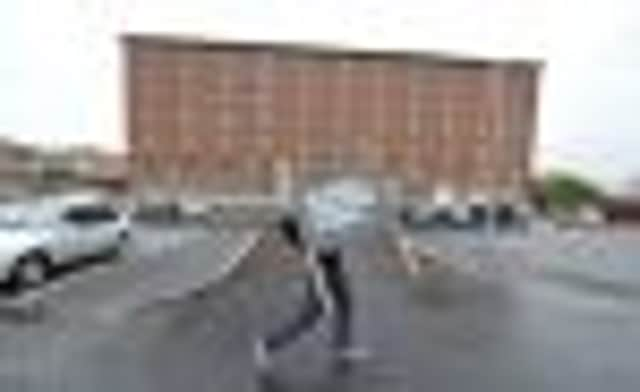Brian Ferguson: Culture cluster can suit Edinburgh


Early for an engagement, I had decided to walk from Glasgow city centre to try to seek out what was about to become the city’s newest cultural building on the banks of the Forth & Clyde Canal.
And as the wind and rain swirled around the sprawling Speirs Lock, I couldn’t help but be impressed by the scale of the infrastructure that surrounded me, including bases for the Royal Conservatoire of Scotland, Scottish Opera, the National Theatre of Scotland, as well as the Glue Factory arts centre.
Advertisement
Hide AdAdvertisement
Hide AdThat day was the official unveiling for the Whisky Bond, a long-awaited home for the Glasgow Sculpture Studios, but also a brand new hub for artists and the creative industries. Not a bad return for a £3 million transformation of a long-running eyesore next to the M8 motorway.
The wider redevelopment of the Speirs Lock area – with future phases including a new rehearsal space for NTS and a waterside student housing development – is already being seen in Edinburgh as one to try to emulate.
In fact, a new cultural vision for the capital, which has finally emerged several months after a summit of senior figures was called, describes Speirs Locks as “one of Scotland’s most dynamic centres of cultural production”.
Although Edinburgh City Council shies away from describing the document as any kind of “blueprint” it is certainly a catalyst for action – or at least it should be.
I’d describe it as the most significant report for the city’s artistic sector for more than a decade – even if none of the proposals it contains are properly detailed or costed.
It also signals a wider sea-change in the council’s attitude towards property development and bold thinking over how to tackle long-standing gap sites across the city.
Gone, or so it seems, are the days of iconic new buildings jutting out in the middle of the Forth or multi-million pound arenas on greenbelt sites.
Instead, the city is envisaging a series of cultural clusters developing on four vastly different sites, all within walking distance of each other in the city centre.
Advertisement
Hide AdAdvertisement
Hide AdAll four sites have been touted for various projects for years. But the new document offers a tantalising glimpse of how they could be transformed.
A parcel of land near Edinburgh College of Art –behind the existing cultural quarter which is home to the Traverse and Lyceum theatres, and Usher Hall – has long been earmarked for development, if issues over property ownership can be unlocked.
Only part of the former Fountain Brewery beside the Union Canal, which the council recently snapped up, is needed for a new school. Large swathes of land are crying out for development.
Edinburgh University long ago revealed ambitions to completely overhaul the Potterrow area, including replacing that notorious fly-over with a new public square looking on to the back entrance of the National Museum of Scotland.
Finally, that horribly busy roundabout at Picardy Place, outside St Mary’s RC Cathedral, might not seem an obvious place to try to encourage a new cultural development – until you remember the Omni leisure centre, the Glasshouse Hotel and Edinburgh Playhouse are also on the doorstep.
The council has effectively challenged the myriad cultural organisations in the city to bring forward proposals for each of these sites.
Crucially, funding for major cultural infrastructure is out there to match projects of far-reaching vision and ambition: the extension to the Royal Concert Hall in Glasgow, the Riverside Museum, the National Museum of Scotland and the Scottish National Portrait Gallery to name but a few.
If the early ideas for any of these four sites in the heart of Edinburgh are to be realised, it will need pretty firm decision-making at the highest levels of the council.
Advertisement
Hide AdAdvertisement
Hide AdIt will also need senior figures in various departments – planners, arts administrators, economic development experts, traffic engineers – to sing from the same hymnsheet for once.
Perhaps they could be persuaded to attend a more focused summit, along with hard-nosed property agents and interested parties from the heritage sector. Maybe, just maybe, a year from now that devilish detail will have started to emerge.